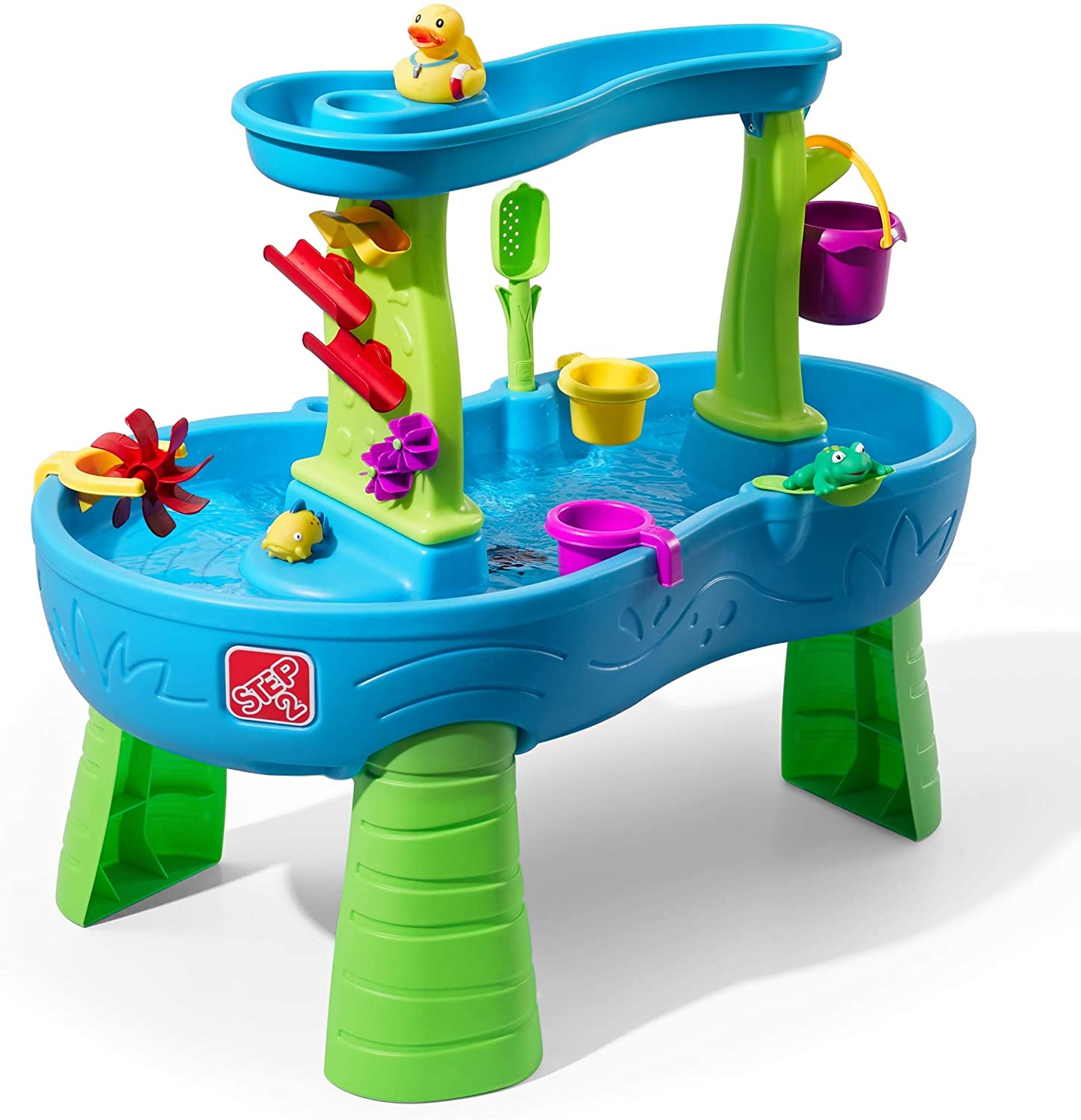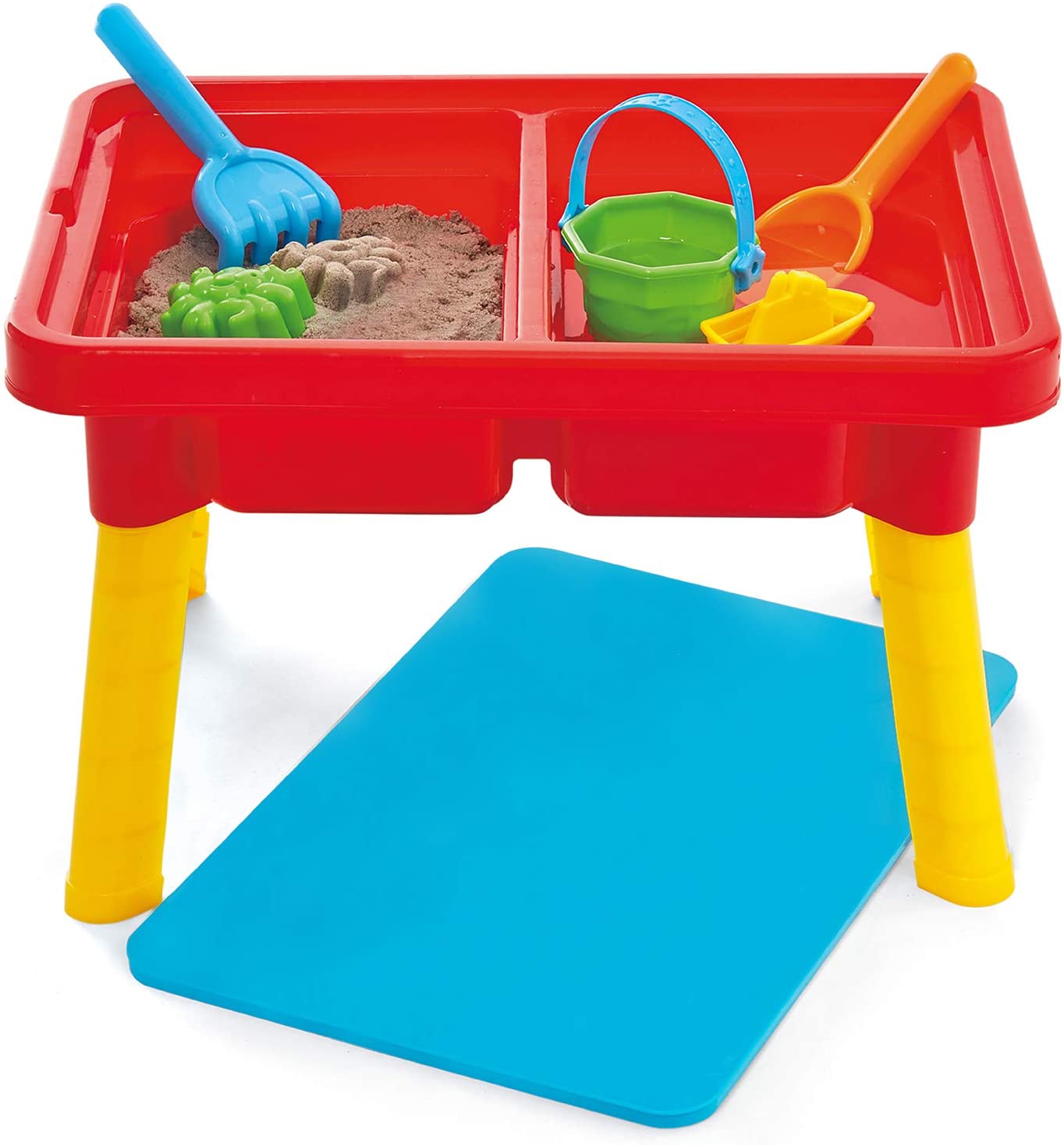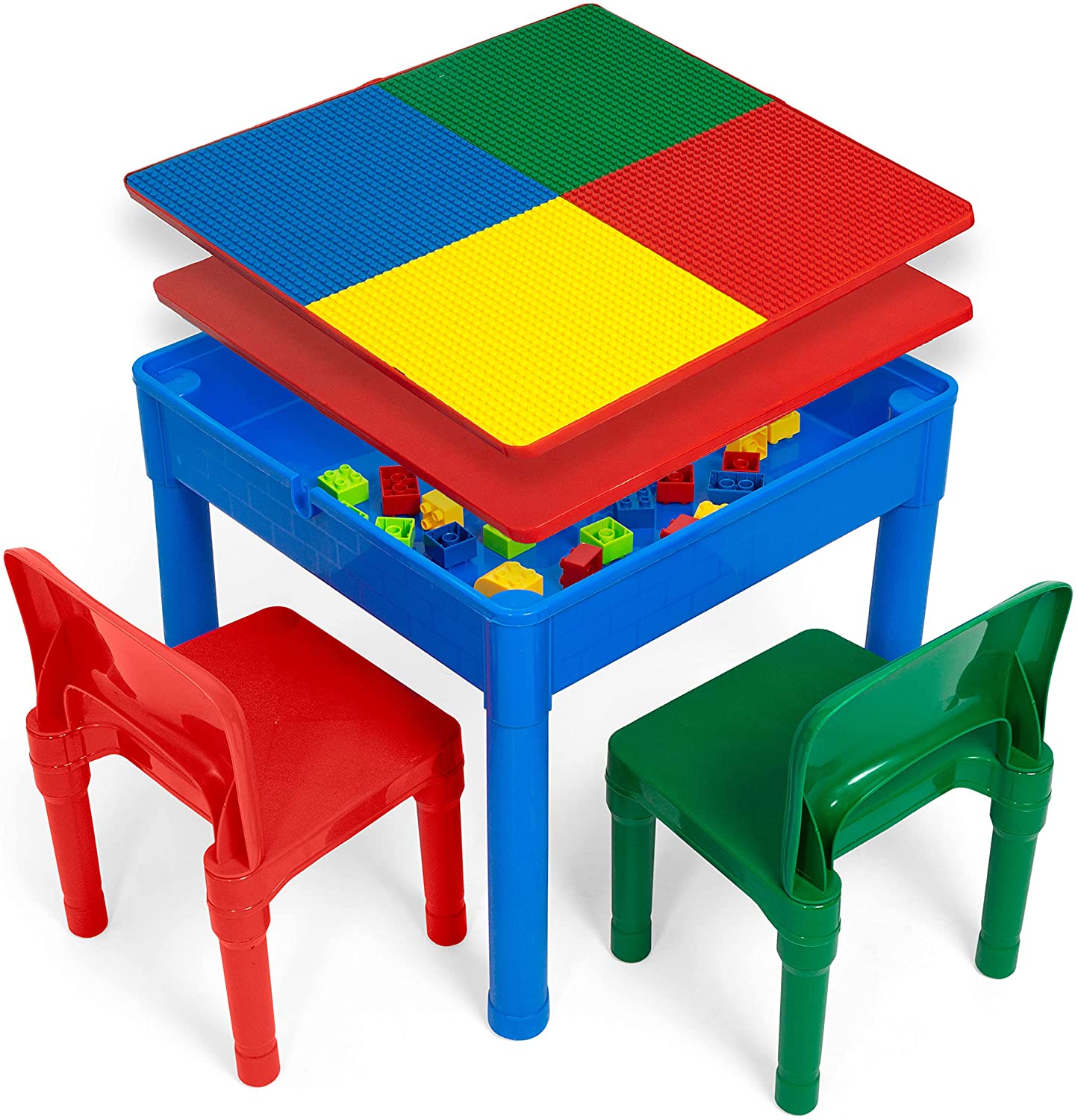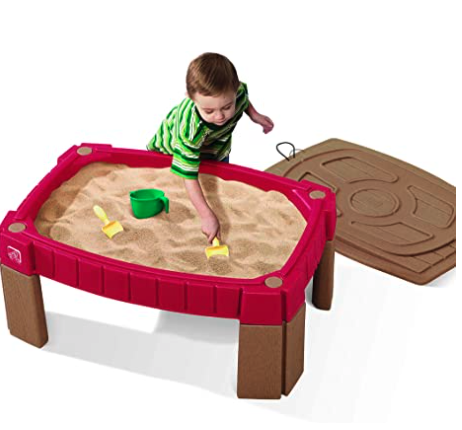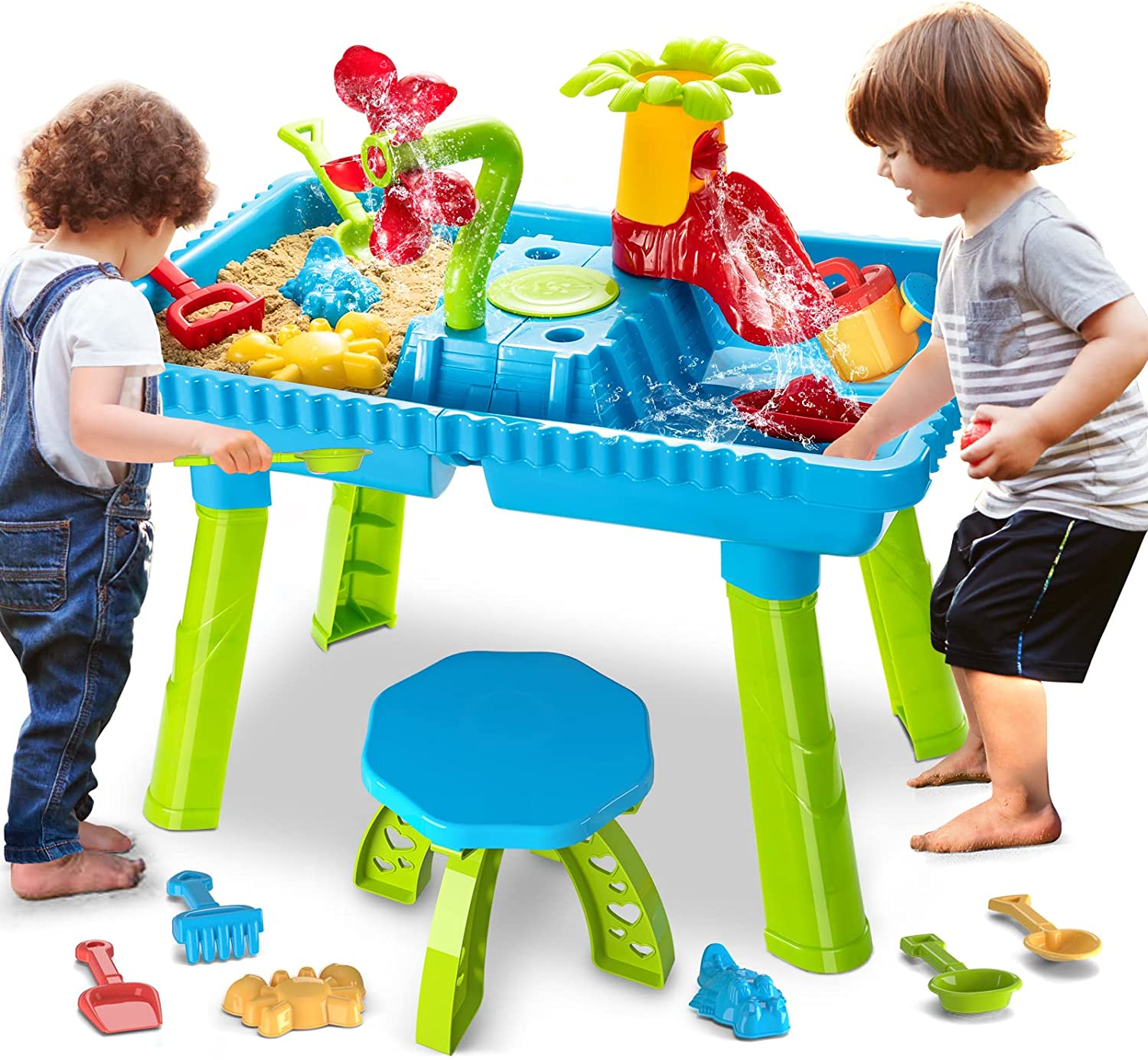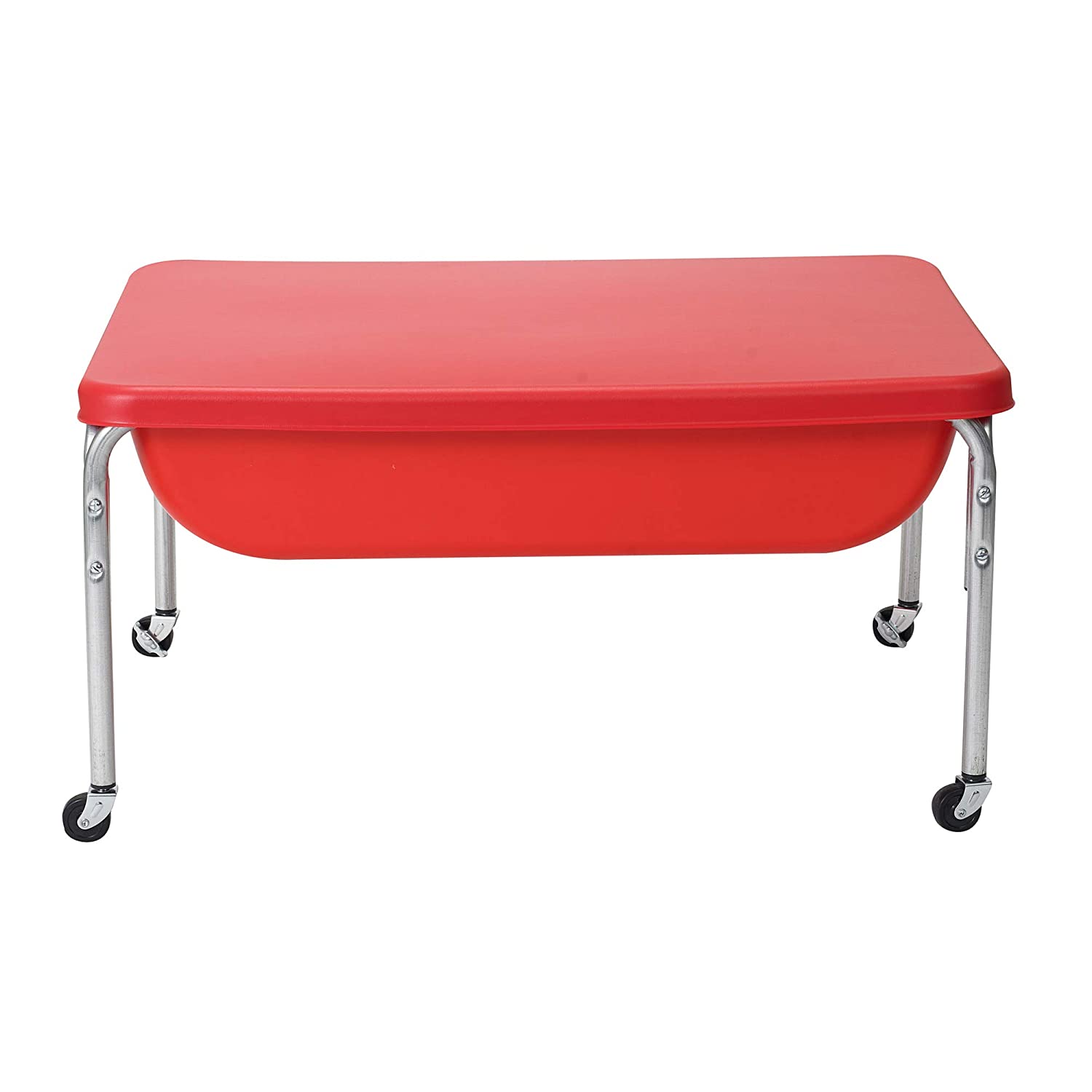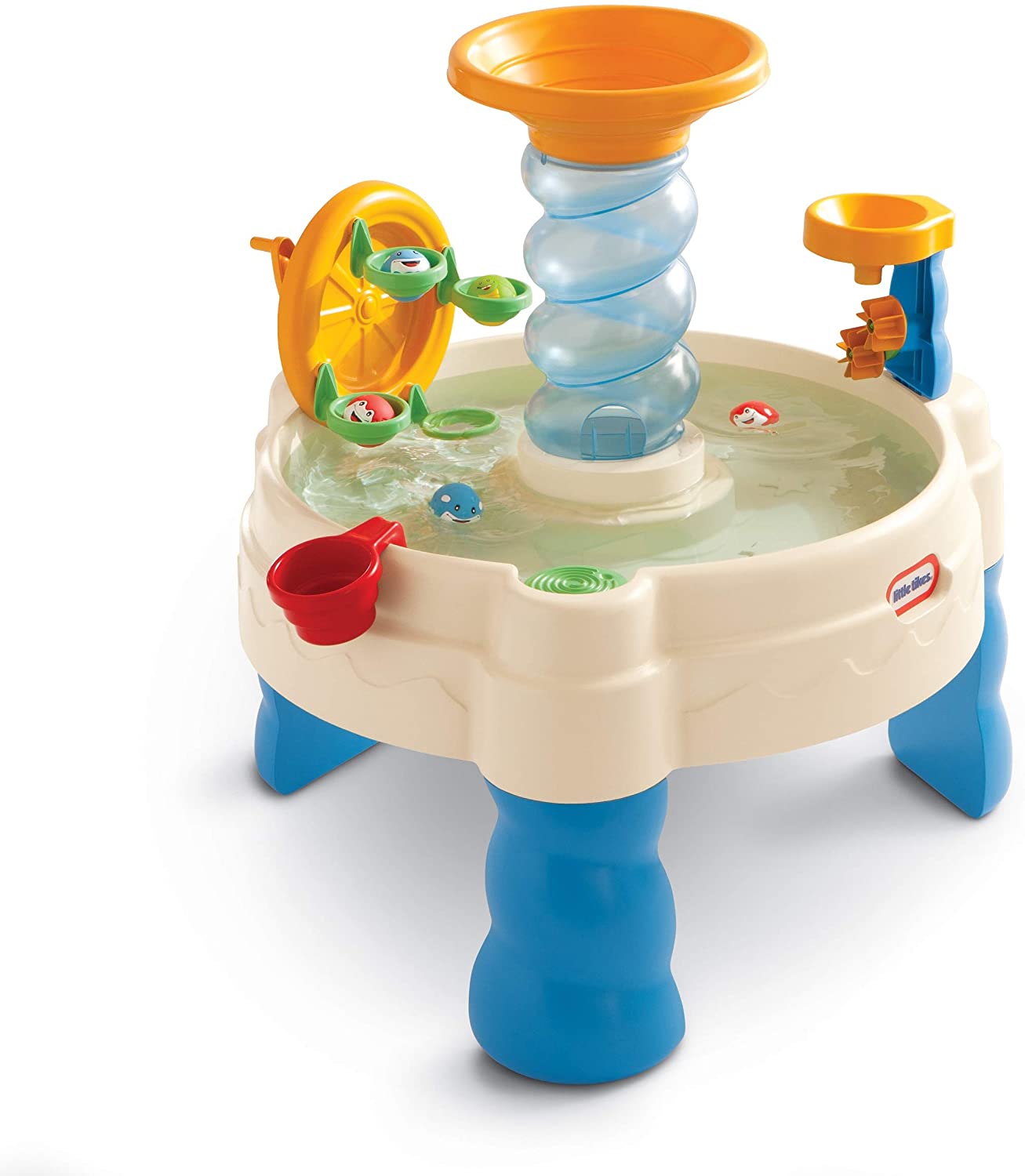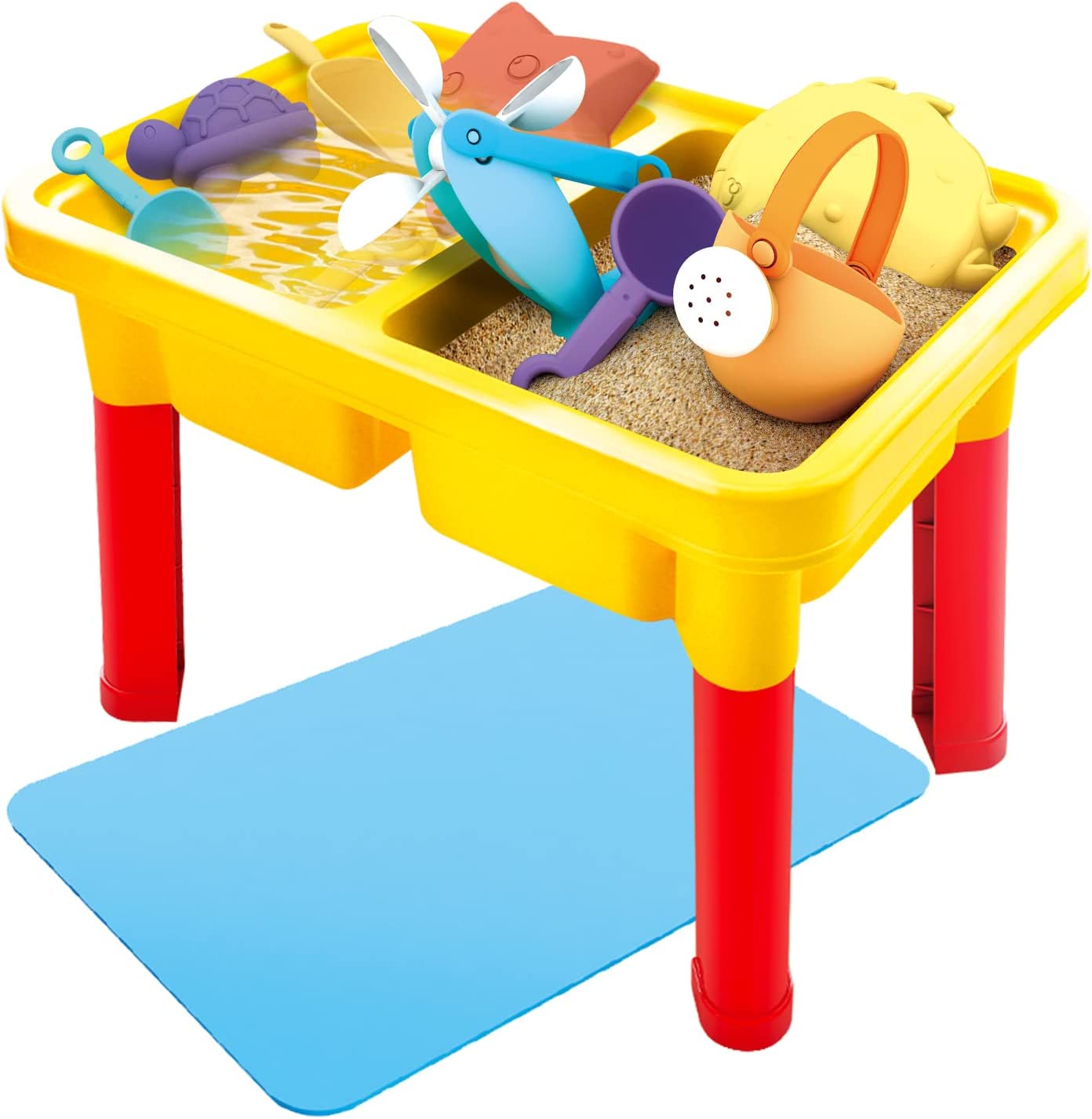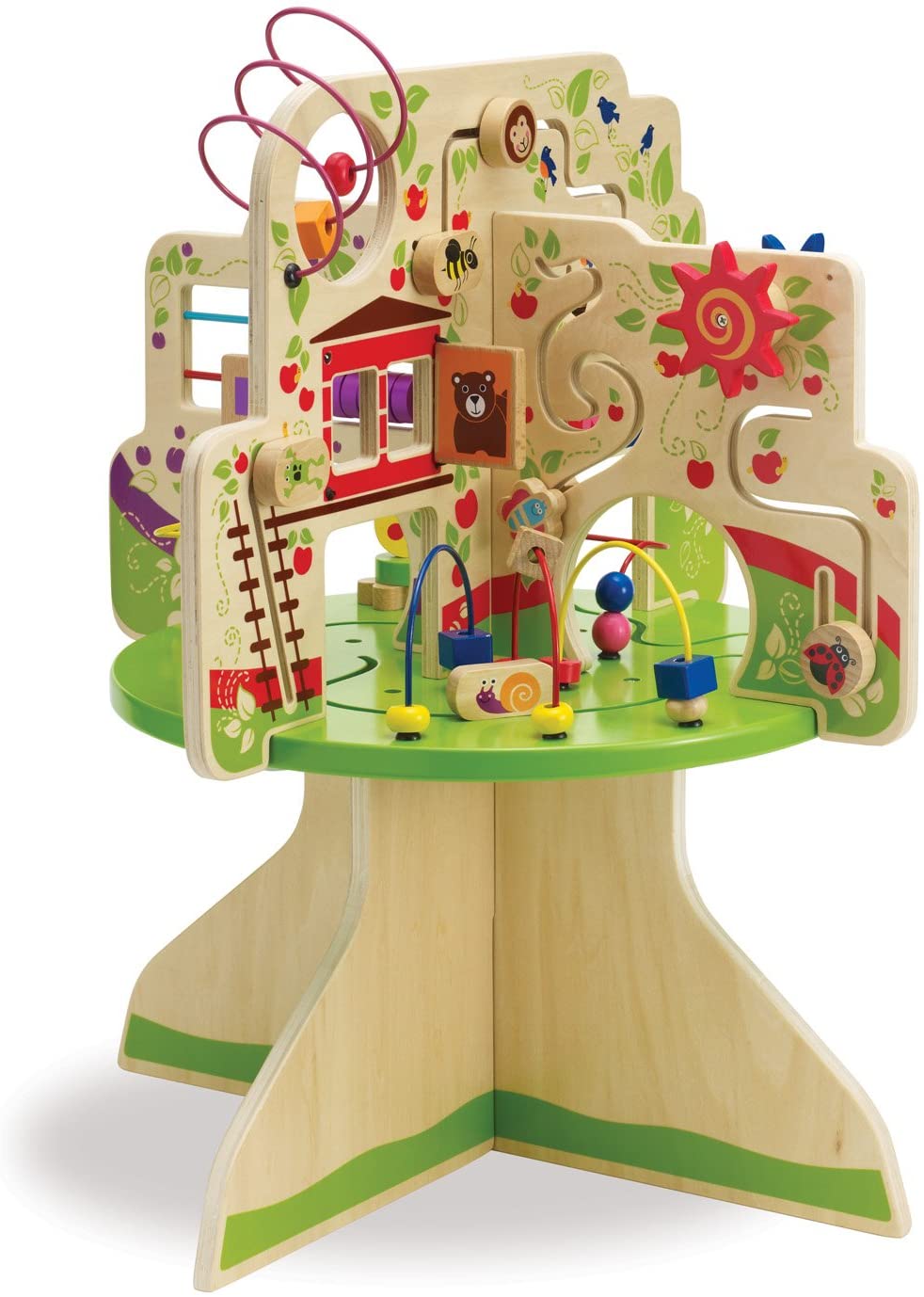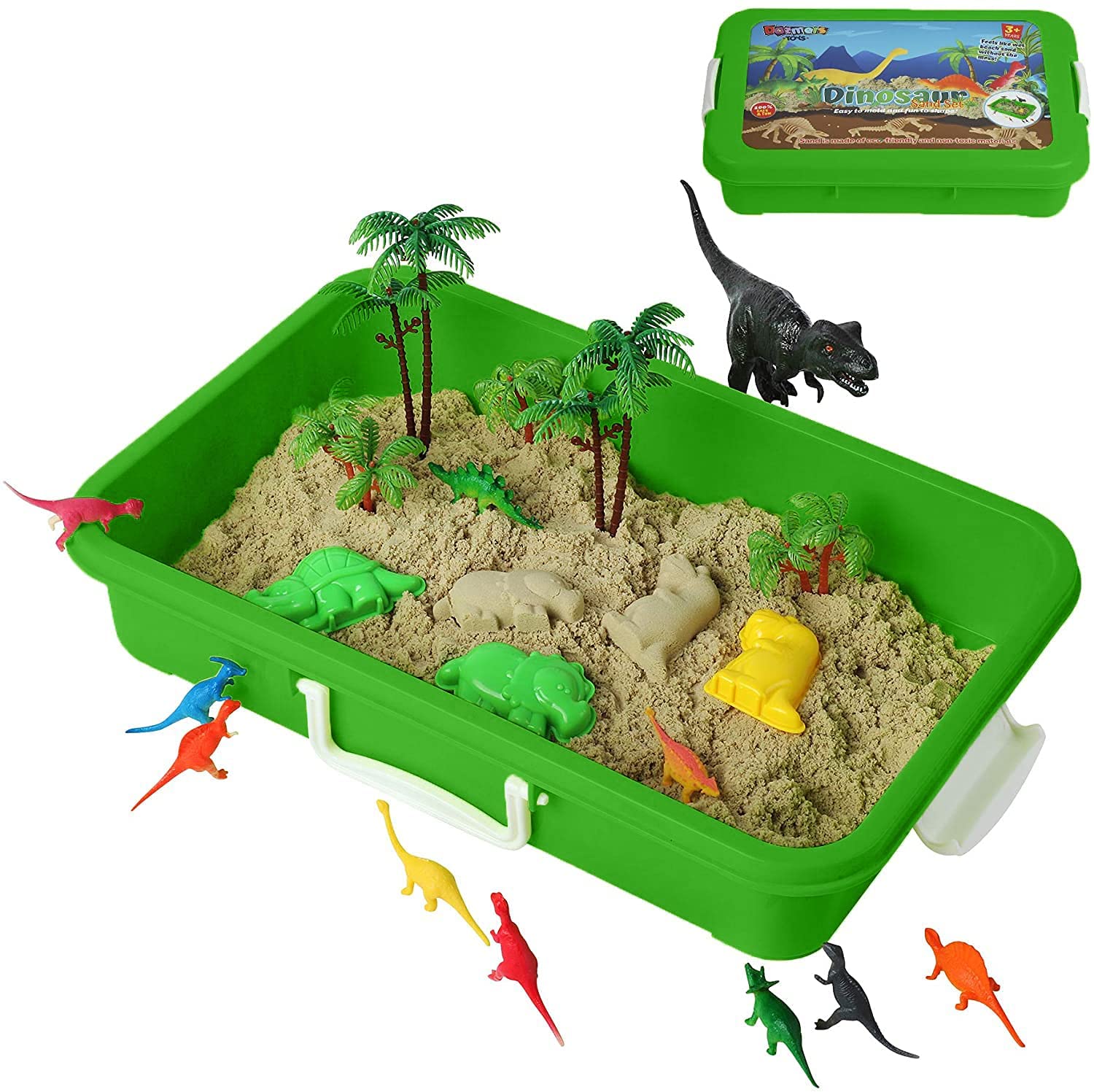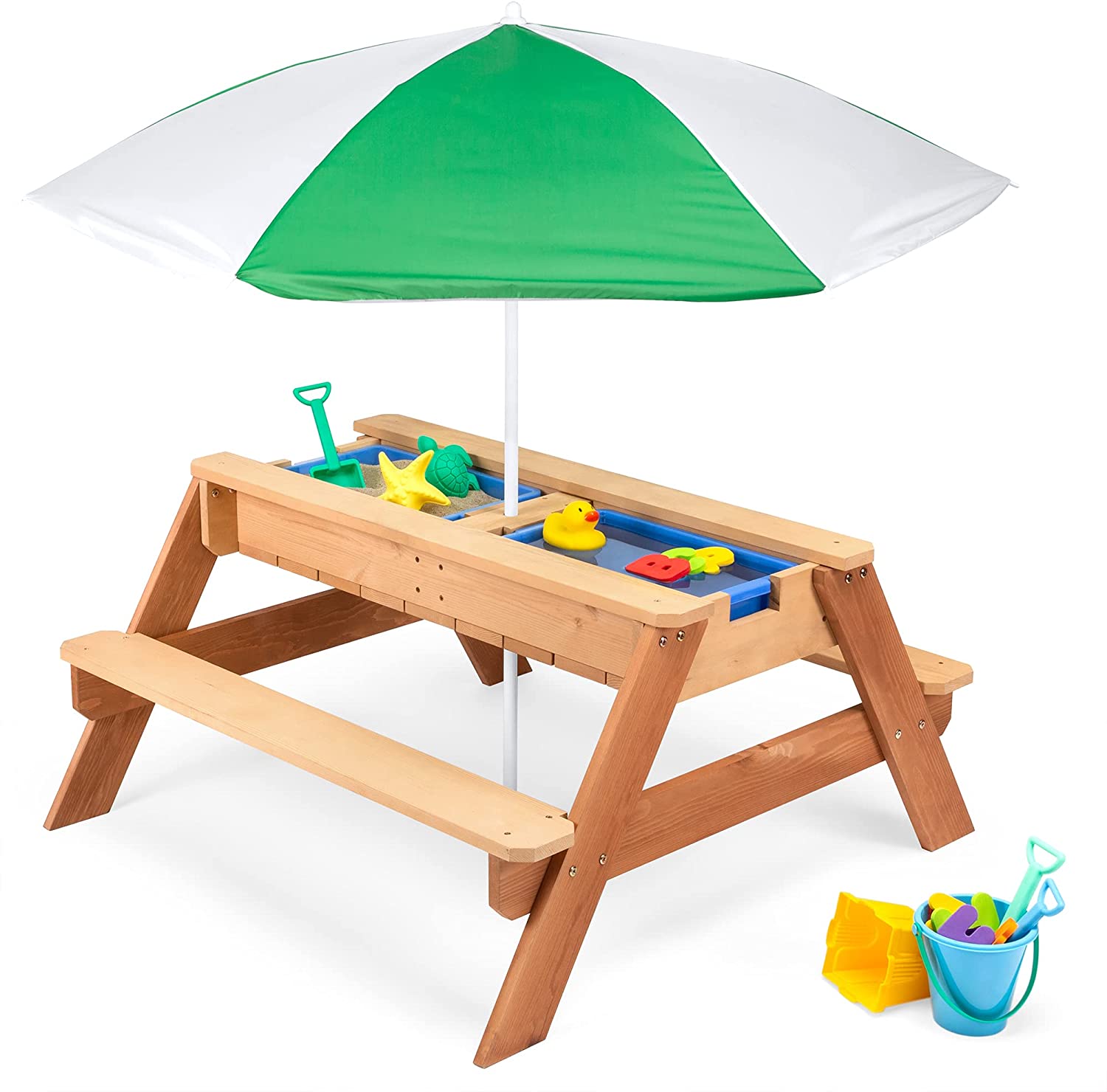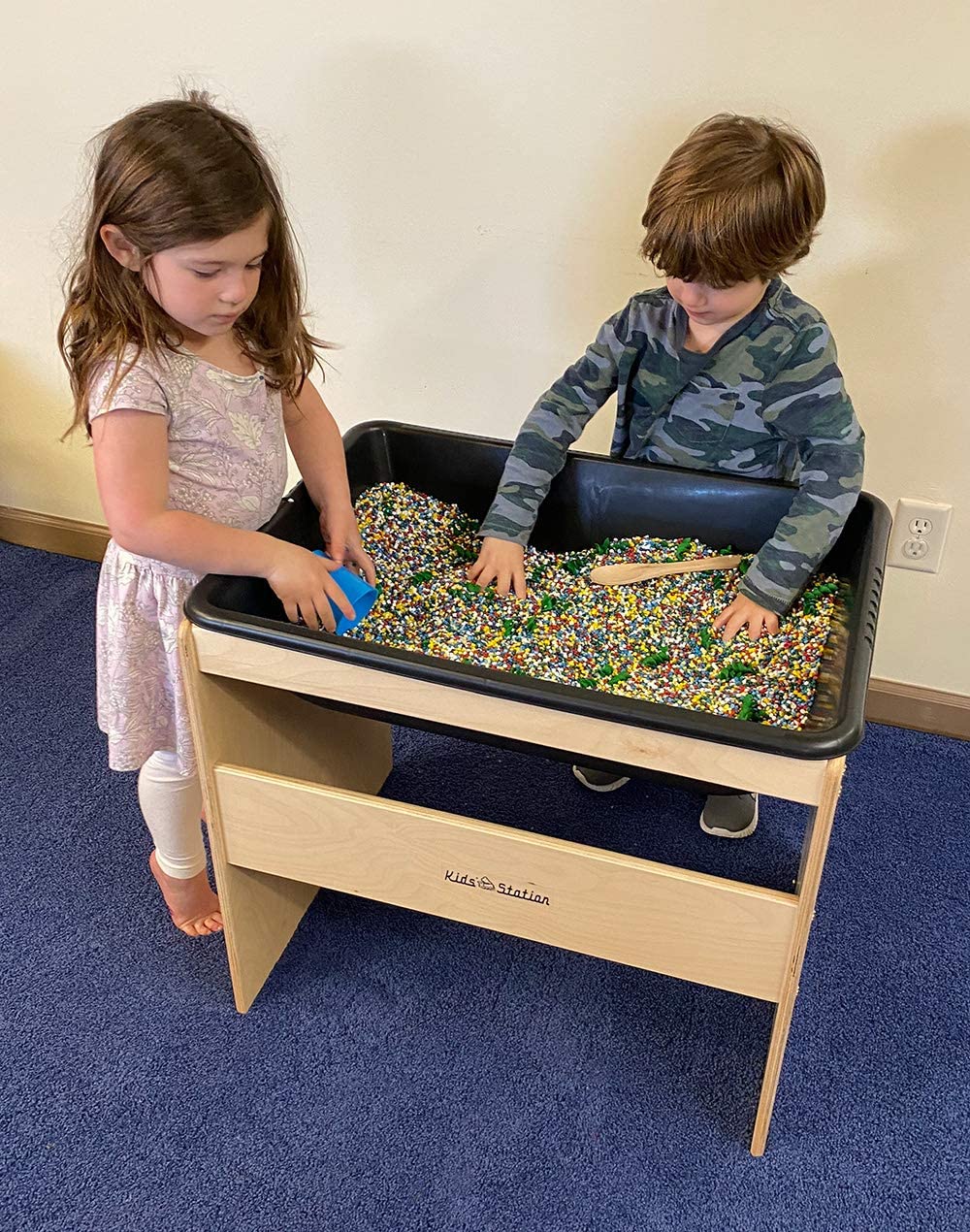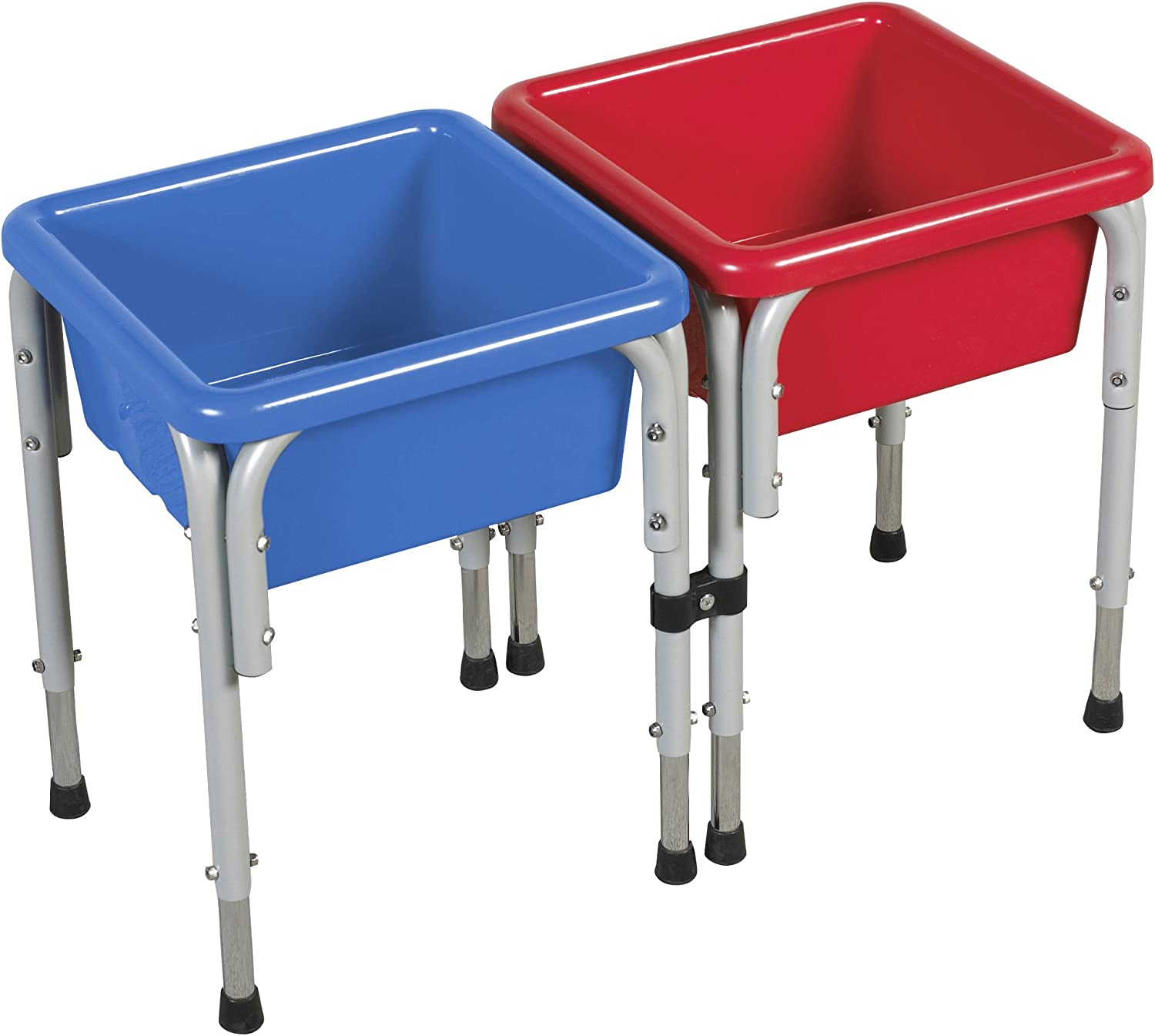Step2 Rain Showers Mini Water Park Sensory Table
Last updated: July 21, 2022
With two levels, this table provides more than enough fun for three or more kids. Little ones can explore physics in a creative way by making different waterfall configurations. The sizeable accessory pack gives plenty of opportunities for interaction.
We looked at the top Sensory Tables and dug through the reviews from some of the most popular review sites. Through this analysis, we've determined the best Sensory Table you should buy.
Product Details
Key Takeaway: Larger families will love this miniature water park.
In our analysis of 50 expert reviews, the Step2 Rain Showers Mini Water Park Sensory Table placed 14th when we looked at the top 14 products in the category. For the full ranking, see below.Expert Reviews
What reviewers liked
Kids use the bucket to create rainfall, which activates spinners and ramps. Accessory toys included. A rich tactile and visual experience. The table is large enough for multiple kids to play and develop social skills.
Because of the long oblong shape, this water table is suitable for a larger group of kids—it can comfortably accommodate for four to five youngsters.
This water table has the most activities and parts of ALL the water tables we looked at. It rains from the top, pours down into spouts and moving parts, includes a toy frog flipper, a water wheel, cups, and buckets for pouring.
It's sized to accommodate more than one child at a time, making it a good choice for families with multiple kids.
The Step2 Showers Splash Water Table has a rain shower feature that produces a life-like rainfall sound.
This table is very durable, and it comes with two stories so kids of all sizes can enjoy playing for hours of fun.
Different arrangements of the maze help create custom waterfalls.
The theme of this best water table contender is a pond. So as you would expect, it comes with a frog, a fish and a duck.
Best of all, the water table comes with a 13-piece accessory pack. This includes two small buckets, one large bucket, two ramps, three spinners, one cattail scoop, one rubber duck, two squirt toys, and one springboard flipper.
What reviewers didn't like
Some assembly is required, though it's not too difficult.
Water can run into the base of the water table and be difficult to get out
This water table takes some effort to put together. With a booklet of over 25 instructions and 20 screws, there are no pre-drilled holes. You must screw each one in by hand until you puncture the plastic.
The rainfall effect doesn’t last long and needs constant refills
View our Sensory Table buying guide for in-depth advice and recommendations.
